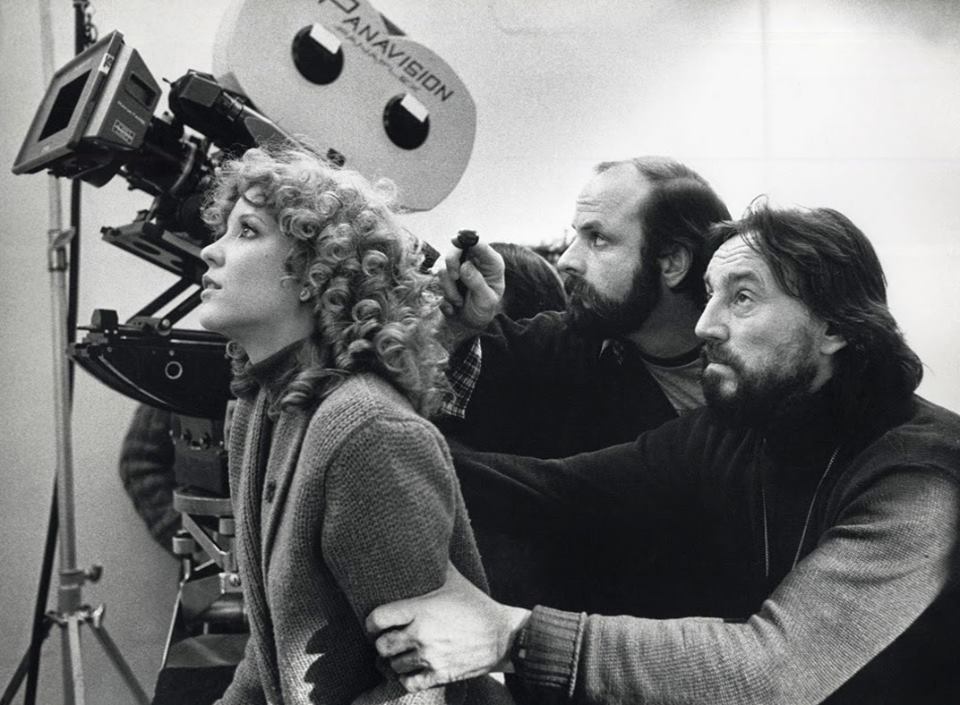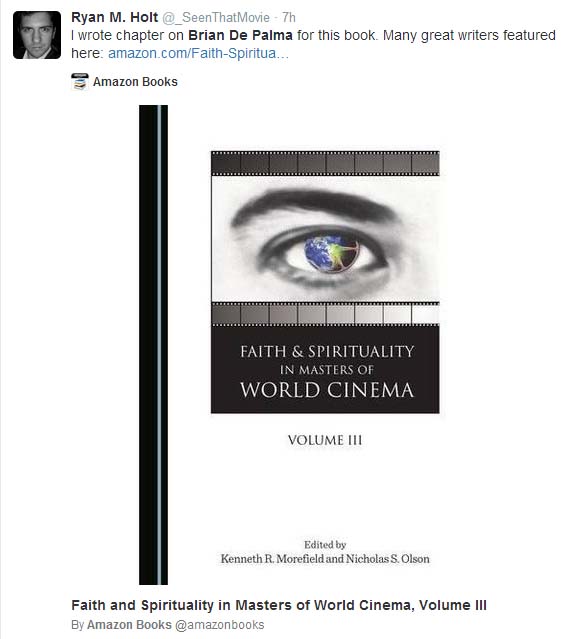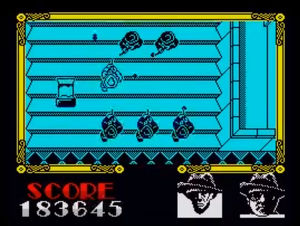ARMANI SAYS FAVE DESIGN JOB WAS 'UNTOUCHABLES'
"I WAS ABLE TO FULLY EXPLORE MY LOVE FOR THE ELEGANCE OF THE 1920s & 1930s"
Yesterday,
The Financial Times posted a conversation between
Giorgio Armani and
Jessica Chastain. In
JC Chandor's
A Most Violent Year, Chastain's character has just seen
Paul Schrader's
American Gigolo (which was the first film Armani designed costumes for), and she "wants to express her status by wearing fashionable clothing," Armani states. "I used archival garments that were representative of my work at the time." At the start of the conversation, Armani explains, "The process of making a costume depends on the type of film and the relationship I have with the director. But the real work takes place around the character and the physicality of the actors. I think firstly of the character, of what she does, and how she moves. I imagine her in real-life situations but I model the clothes on the actress. It’s exciting work, as the clothes are silent protagonists of the story and have an important place in the narrative."
At the conclusion, Armani looks back at two early highlights in his film career: "I’ve now designed the costumes for 225 films. My favourites were those I created for The Untouchables, [directed] by Brian De Palma, because I was able to fully explore my love for the elegance of the 1920s and 1930s. But my first film collaboration happened by chance, like all really exciting adventures, when a young film-maker named Paul Schrader asked me to dress Richard Gere. Schrader was fascinated by the modernity of my style. The film was American Gigolo and the rest, as they say, is history."
In a separate article posted about a year ago at the London Evening Standard, upon the release of Martin Scorsese's The Wolf Of Wall Street (for which he also designed the costumes), Armani further discussed designing for the two '80s films:
American Gigolo:
"Richard Gere has a different body type to Leo [DiCaprio]. He has an incredible sensuality and wears every look so naturally, so he was a pleasure to dress. It was 1980 but there was a modernity to the plot, which put a handsome, alluring man at the centre of a psychological thriller.
"At that time, I was motivated by the desire to modernise menswear. In most other areas, new technology was moving forward at a fast pace, but in the field of men’s clothing we were still tied to more or less the same clothes as our fathers and grandfathers wore. I wanted to use softer fabrics and rethink the suit, getting rid of most of the linings and fillings. The unstructured result was a truly new look that preserved its precision while becoming more body-conscious and more comfortable."
The Untouchables
"The time of Prohibition, big gangsters and the first police heroes fighting against the Italian-American Mafia fascinates me. It was a courageous, almost epic, period. It holds major appeal, like all great battles between good and evil: a sheriff and his men fighting against the bad guys, like in the Westerns of the last century, but the fact that it was based on real events made it more fascinating.
"In those years, the volumes were generous and a little bit heavy, with big overcoats completed with the ubiquitous Borsalino hat. The real clothing from that period was quite far removed from my vision as a designer; it was precisely those volumes that, starting in the late 1970s, I wanted to lighten up. So for the film we sought a compromise — credible clothing for the period but more in keeping with my aesthetic.
"I am not sure Kevin Costner changed a great deal between this film and when I dressed him for The Bodyguard in 1992. The Untouchables made him an international star, while The Bodyguard confirmed his status as a sex symbol. What might have happened between the two films is an increase in the public’s estimation of him, but his qualities as an actor remained unchanged."









 Kevin Costner was honored with a Lifetime Achievement Award last night at the 20th annual Critics' Choice Movie Awards, presented by the Broadcast Film Critics Association. Following an introduction by Rene Russo (a longtime friend of Costner's, fighting laryngitis) and Storage Wars auctioneer Dan Dotson, a montage of clips from Costner's films was screened, which included several bits from The Untouchables, highlighted by Costner's "You're not from Chicago" line in the movie. During his acceptance speech, Costner said, "I'd like to thank the directors who took a chance on me early: to Lawrence Kasdan, Brian De Palma, Phil Robinson, and of course, Ron Shelton. There's really not enough words-- you handed me my career."
Kevin Costner was honored with a Lifetime Achievement Award last night at the 20th annual Critics' Choice Movie Awards, presented by the Broadcast Film Critics Association. Following an introduction by Rene Russo (a longtime friend of Costner's, fighting laryngitis) and Storage Wars auctioneer Dan Dotson, a montage of clips from Costner's films was screened, which included several bits from The Untouchables, highlighted by Costner's "You're not from Chicago" line in the movie. During his acceptance speech, Costner said, "I'd like to thank the directors who took a chance on me early: to Lawrence Kasdan, Brian De Palma, Phil Robinson, and of course, Ron Shelton. There's really not enough words-- you handed me my career."


